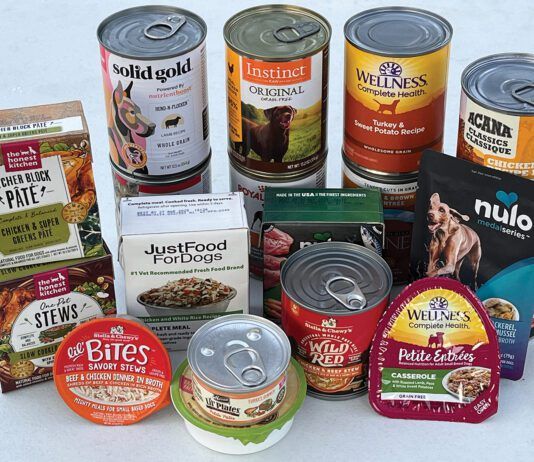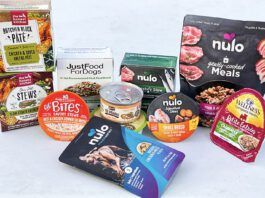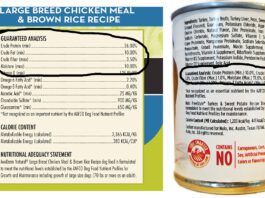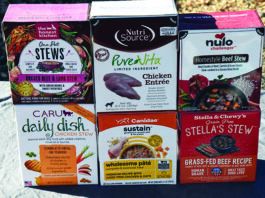Whole Dog Journal’s 2011 Canned Dog Food Review
Wet dog food is much more natural" for dogs to eat than dry kibble. Its moisture content is closer to that of meats
5 Steps to Enhancing Your Dog’s Store-Bought Dog Food
Whole Dog Journal readers have learned how to identify the best commercial foods when they shop for their dogs. But whether you feed dry kibble or canned food, even the best commercial diets can be improved with the addition of appropriate fresh foods. Keep the following things in mind when adding fresh foods to your dog's diet.
Whole Dog Journal’s 2009 Canned Dog Food Review
We like canned food for dogs. It's more expensive than dry, but good varieties of canned dog food are arguably healthier than comparable dry dog foods, due to the higher inclusion of animal proteins and the higher moisture levels. Both of these things are closer to the dog's evolutionary diet than dry diets that contain a lot of grain. Some dog owners stopped buying wet dog food following the spring 2007 pet food recalls of foods that contained melamine and/or cyanuric acid. Given the fear and lack of information in the early days of the recall, this made sense. Now, however, we know more about the factors that led to the recalls, and we feel more certain than ever that wet pet foods offer health benefits to many dogs - and that our recommendations for choosing wet dog foods can help owners identify the safest, healthiest products available.
Whole Dog Journal’s 2007 Canned Dog Food Review
How should you choose a canned food for your dog? To start, by looking past its advertising in dog magazines or its front label. We suggest you focus on its ingredient panel, its guaranteed analysis (GA), and finally, on its performance in feeding trials with your dog.
Whole Dog Journal’s 2005 Canned Dog Food Review
The making of laws and sausage, goes the old saying, is better unseen. Apparently, the pet food industry feels the same way about “wet” food for dogs and cats. We haven’t yet managed to get into a cannery to see how the product is made (but we’re not giving up!). There are a few reasons for this. The first has to do with the fact that there are very few wet food canneries in the U.S., relative to facilities that manufacture dry food. (As a matter of fact, the entire canning industry – of pet food and human food – has seen enormous consolidation in the last decade.
Whole Dog Journal’s 2003 Canned Dog Food Review
Can you tell the difference between a top-quality, healthy canned food, and one that can’t contribute much to your dog’s vitality or well-being? We teach you how, and offer buying suggestions.
Whole Dog Journal’s 2002 Canned Dog Food Review
and accordingly
Whole Dog Journal’s 2001 Canned Dog Food Review
or fish broth is used in place of water.
We looked for the use of whole grains and vegetables
Whole Dog Journal’s 1998 Canned Dog Food Review
and disabled." It includes meat that was too high in hormones
Whole Dog Journal’s 2000 Canned Dog Food Review
these days?) and they can't share the information with you for fear that the knowledge will spread and this will result in some sort of advantage by their competitors.
The truth is
Canned Dog Food or Dry Dog Food? We’ll Help Break it Down
Caring guardians of companion canines often wonder whether one form of commercially prepared food – kibble or canned – is better than the other. The truth is, both types of food have relative advantages and disadvantages in terms of palatability, digestibility, and necessity for preservatives or other chemical additives. While they generally meet the same chemical composition standards in terms of vitamins, minerals, and amino acids, these types of food provide very different nutritional value.















